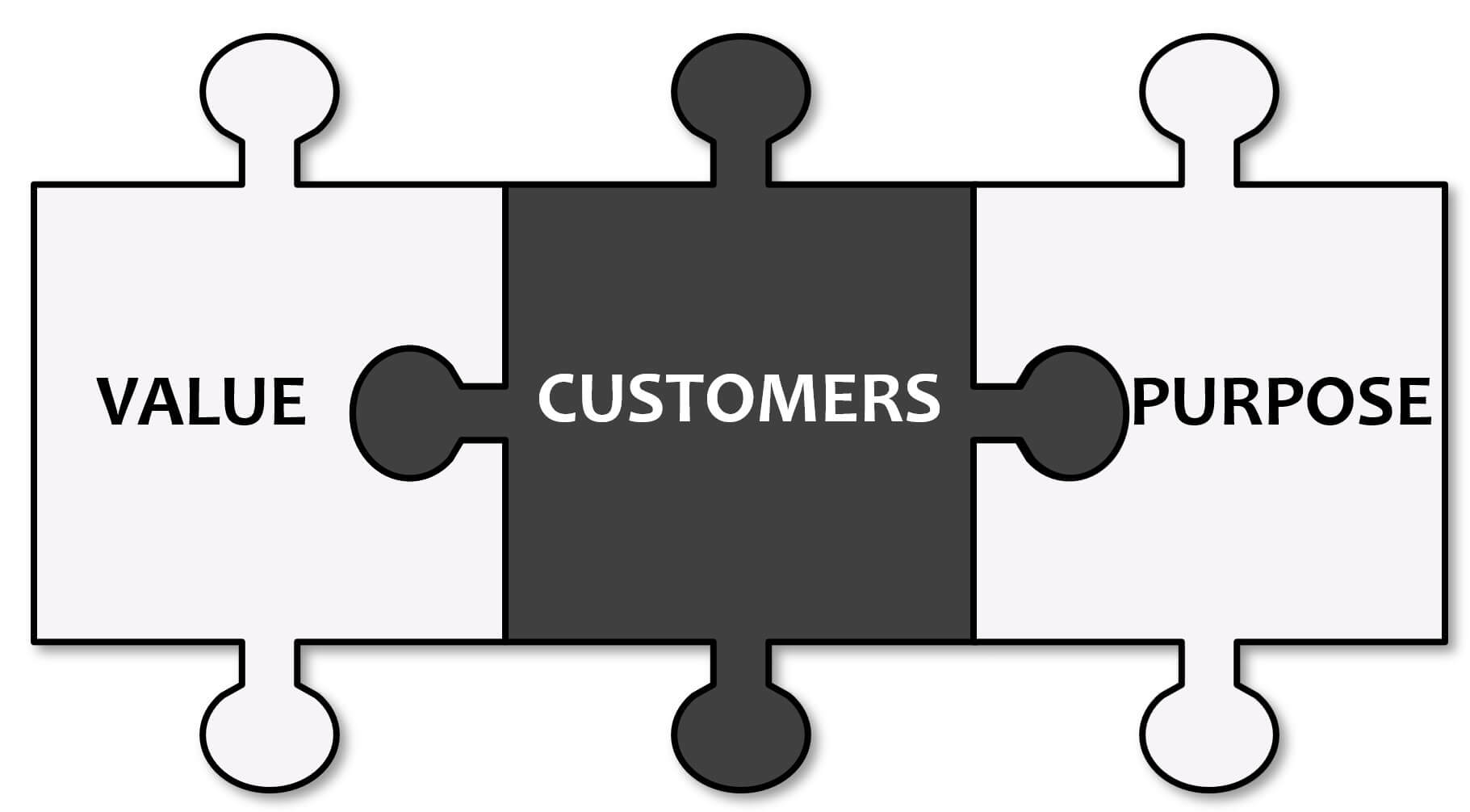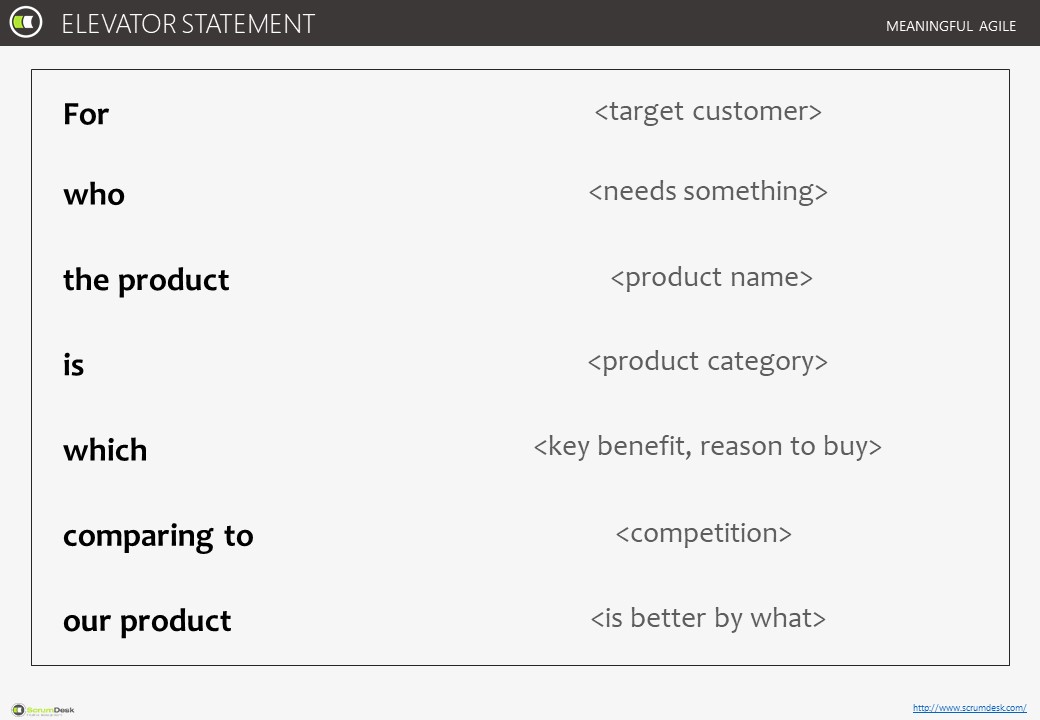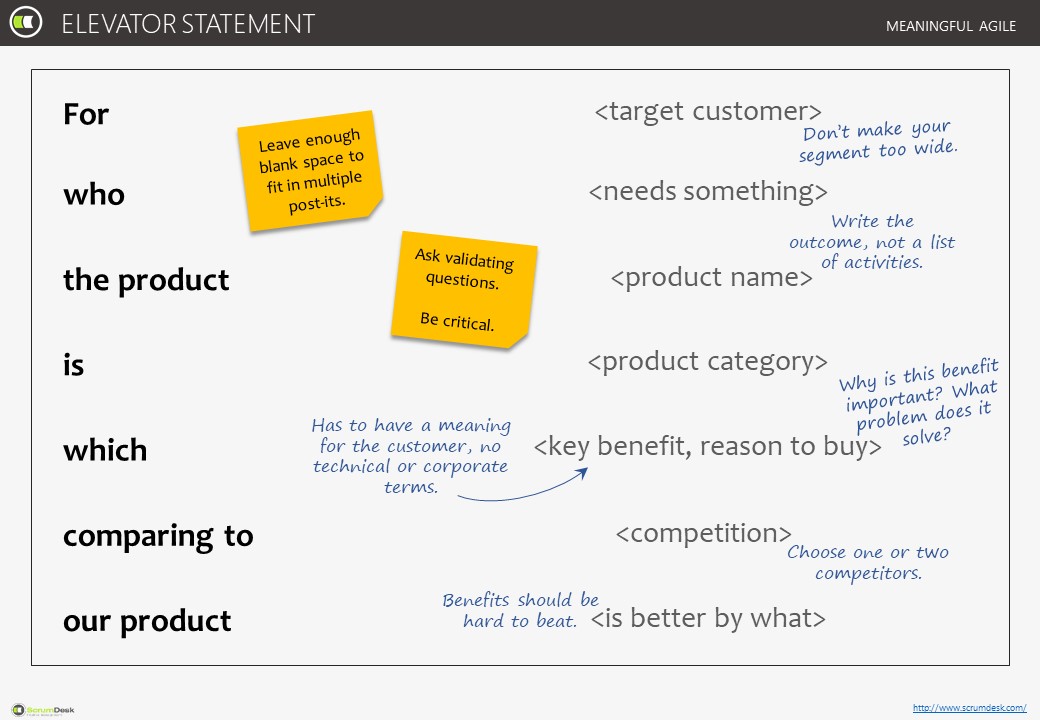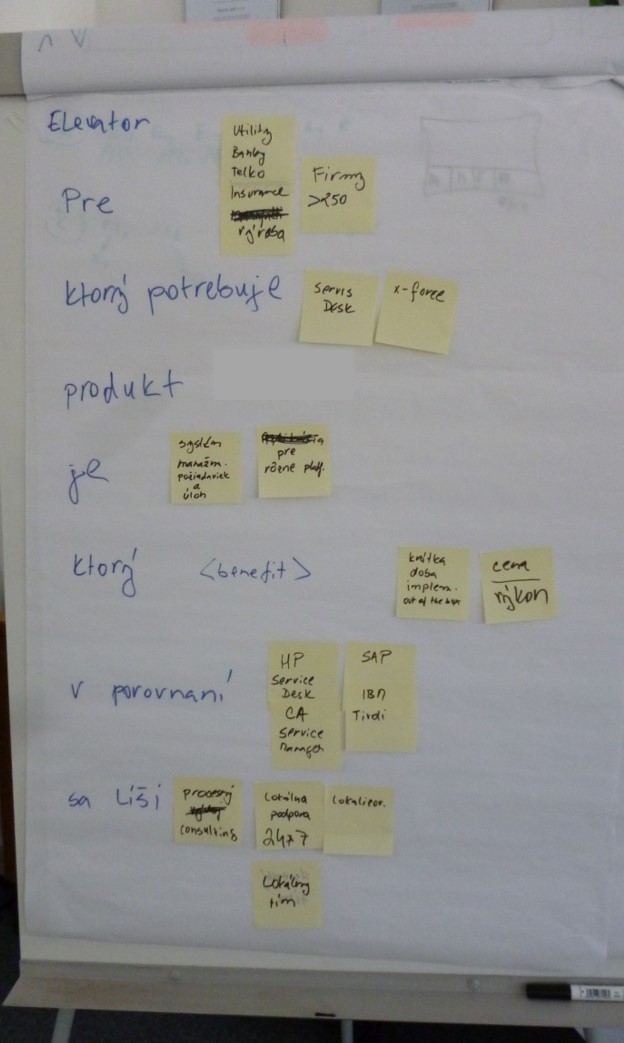What value your product brings? Can you explain in 30 seconds?
You want to build a meaningful product that brings value to customers. But how can you do your best to stay on the right track? To focus on the features that matter or create a product that customers want to buy? Start with an elevator statement and focus on what’s important from the beginning.
An elevator statement (often referred to as a vision statement or an elevator pitch) is a short description of a product, that helps us focus on product goals with an understanding of what the product is, what it is not, who it’s for and how it’s different compared to the competition.
It doesn’t matter if you’re already developing a product or you’re just starting, get the team together and write an elevator statement. In this article, we’ll give you tips and tricks to get you started right now.
Learn to write a meaningful elevator statement together
The product owner creates, manages and own the elevator statement. However, it’s essential the whole team contributes when created the vision for the product.
Start writing the elevator statement using this template:
Rewrite the parts written in black letters on a whiteboard or a big sheet of paper, making sure you leave enough room to complete the statement. Next, start with the first part, the For , write down everyone’s opinion, ideally on post-its, and put them next to each other on the board. You need the blank space to fit everyone’s ideas. Continue by doing this for every part of the statement. Multiple people putting down their idea opens a discussion on what the expectations are and what is the best focus of the product.
How to write a great elevator statement?
However, writing a great elevator statement requires a little more than just writing the first thing that comes to mind; it’s essentially a product vision that sets the direction of the development. Be critical and ask yourselves a lot of validating questions. For example:
What value does this product bring to the customer? Will the customer choose the product because of what we think it should be? How easy/difficult is it to beat this benefit by others? Why is this benefit/feature important? Is it long-term?
Avoid mistakes we see very commonly in our consultancy work with agile teams:
- Choosing too diverse segment. Pick which segments want to use your product. You can’t make a great product for everyone, as every group has different needs. Less is more.
- When you list what companies need, don’t think about activities they want to do, but think what the outcome is.
- When describing your key benefit, talk about something that has an impact on the customer, the reason why someone would choose this exact product. Avoid using too much technical language, like intuitive UI/UX, multilevel architecture, reliable, secure, user-friendly, or buzz words like a great benefit-cost ratio.
- If your product is new and there aren’t other companies doing something similar, just skip the part about your competitors. But don’t brush it off without proper research. Or better, search for them in user’s life. What they do use currently to solve problems your product should solve as well?
- When comparing your product to the competitors, use benefits that mean something and are hard to beat, don’t use buzzwords like cheaper, faster or more intuitive.
In general, an elevator statement should be about the outcomes of a product, real benefits to the customer, not just a description of features. These should be unique and difficult to top by other products. The statement should be short and polished. A great way to help validate the focus of your product while writing an elevator statement is to bring in someone not involved. A person with a certain distance will have a different, clearer, and maybe more critical viewpoint.
Apply Shu-Ha-Ri to make it perfect
When you finish writing the first draft of the statement, take two or three days off and review it again. See what could be written better or if there’s something to change and write better. Creating the elevator statement in multiple sessions might take more time, but the distance you gain over a few days makes for a better result in the end.
Tip 1: show the finished statement to your coworker from another division, a friend, or a spouse. If they understand it and see the goals of your product, you’re heading in the right direction.
Tip 2: close your eyes and imagine the product based only on what you wrote in the elevator statement. Does what you see match your vision?
Once you’re happy with the elevator statement, make it visible at all times. Put it in the team’s meeting room, office, or anywhere it stays visible as much as possible.




